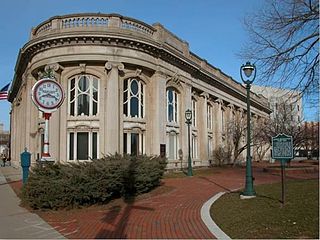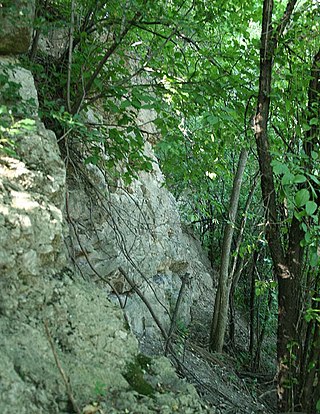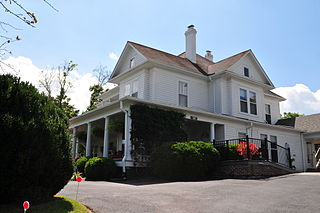
Wauwatosa is a city in Milwaukee County, Wisconsin, United States. The population was 48,387 at the 2020 census. Wauwatosa is located immediately west of Milwaukee, and is a part of the Milwaukee metropolitan area. It is named after the Potawatomi Chief Wauwataesie and the Potawatomi word for firefly.

The neighborhoods of Milwaukee include a number of areas in southeastern Wisconsin within the state's largest city at nearly 600,000 residents.

The Milwaukee County Historical Society, also known as MCHS, is a local historical society in Milwaukee County, Wisconsin. Founded in 1935, the organization was formed to preserve, collect, recognize, and make available materials related to Milwaukee County history. It is located in downtown Milwaukee in the former Second Ward Savings Bank building.

University of Wisconsin Science Hall is a building on the campus of the University of Wisconsin–Madison. It is significant for its association with Charles R. Van Hise, "who led the Department of Mineralogy and Geology to national prominence" and then served as president of the university. The building was constructed in 1888. It was declared a National Historic Landmark in 1993.

Soldiers' Home Reef, also known as Rocky Point, National Military Asylum Reef, or Veterans' Hill is a fossilized coral reef rock formation in Milwaukee, Wisconsin. The reef formation was discovered by geologist Increase A. Lapham in the 1830s. It and other fossilized coral reefs that he discovered were the first geological reef formations described in North America, and are among the first described in the world. This reef was declared a National Historic Landmark in 1993.

The Thomas A. Greene Memorial Museum, also known as Greene Geological Museum or Greene Museum, is a mineral and fossil museum in Milwaukee, Wisconsin, administered by the Department of Geosciences at the University of Wisconsin–Milwaukee.

Schoonmaker Reef, also known as Wauwatosa Reef, Schoonmaker Quarry, Raphu Station or Francey Reef is a 425 million year-old fossilized reef in Wauwatosa, Wisconsin. It was discovered in 1844 by Increase A. Lapham and Fisk Day on the site of a quarry owned by the Schoonmaker family. Geologist James Hall declared its significance in 1862. It was the first ancient reef described in North America, and among the first described in the world. It is located North of W. State St., between N. 66th St. and N. 64th St. extended, in Wauwatosa. It was declared a National Historic Landmark in 1997.

The T. Thomas Fortune House, also known historically as Maple Hall, is a historic house at 94 Drs. James Parker Boulevard in Red Bank, Monmouth County, New Jersey, United States. Built in the mid-19th century, it was the home of Timothy Thomas Fortune (1856–1928), a leading African-American journalist and civil rights advocate, from 1901 to 1908. The house was named a National Historic Landmark in 1976. It is now owned by a nonprofit organization dedicated to preserving and promoting Fortune's legacy of activism and community involvement.
Holbrook House or Holbrook Farm may refer to:
Fisk Holbrook Day was a physician and an amateur geologist in Wisconsin who developed an impressive collection of Silurian-age fossils. The collection is now at Harvard University.

Thomas Arnold Greene was an American pharmacist and amateur geologist. He is known for his collection of fossils and minerals which were preserved by his family in a museum known as the Thomas A. Greene Memorial Museum.

James O. Douglas was an American architect in Wisconsin. He has been called a "noted Milwaukee society architect".

The Church Street Historic District is a one-block neighborhood of historic homes built from about 1857 to 1920. It was added to the National Register of Historic Places in 1989.

The Kneeland-Walker House is a 3-story mansion built in 1890 in Wauwatosa, Wisconsin, styled Queen Anne with Shingle style influence. Still largely intact, and possibly the finest example of Queen Anne architecture in Wauwatosa, it was added to the National Register of Historic Places in 1989.

The Washington Highlands Historic District is a historic subdivision in Wauwatosa, Wisconsin, planned by Hegemann & Peets starting in 1916. It was added to the National Register of Historic Places in 1989.

The North Grant Boulevard Historic District is a neighborhood of stylish houses built on large lots from 1913 to 1931 in Milwaukee, Wisconsin, United States. It was added to the National Register of Historic Places in 1995.

Dr. Virgil Cox House is a historic home located at Galax, Virginia. It was built about 1913, and is a large 2+1⁄2-story frame dwelling with Queen Anne and Colonial Revival style design elements. It has a complex exterior presentation, complex roof plan, and an equally complex floor plan. The house is sheathed in German siding and features irregular, front-gable projections on the facade and north side; a projection with a polygonal bay on the southwest corner, a gable-roof dormer on the facade; and a small, upper balcony on the facade with attenuated Tuscan columns and pilasters. Also on the property are a contributing boxwood garden and outbuilding.

The East Side Historic District is a historic neighborhood of Stoughton, Wisconsin of stylish homes built mostly from 1890 to 1915. It was added to the State Register of Historic Places in 1996 and added to the National Register of Historic Places in the following year.

The Southwest Side Historic District is a neighborhood in Stoughton, Wisconsin with over 100 contributing properties in various styles built as early as 1856. It was added to the State and the National Register of Historic Places in 1997.

The Pleasant Hill Residential Historic District is a largely intact old neighborhood a few blocks east of Marshfield's downtown. Most of the contributing properties in the district were built between 1880 and 1949, including large, stylish homes built by businessmen and professionals, and smaller vernacular homes built by laborers. The district was placed on the National Register of Historic Places in 2000 for its concentration of intact historical architecture.




















